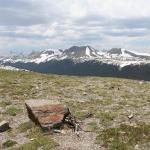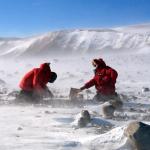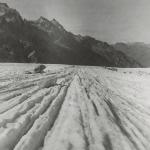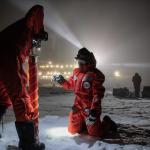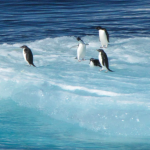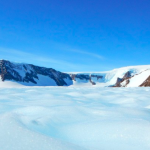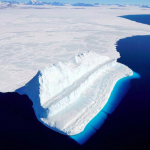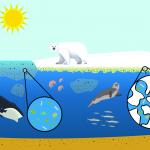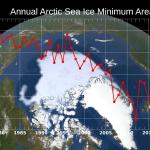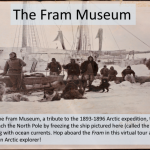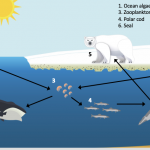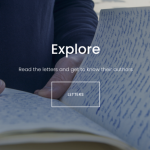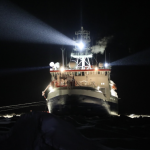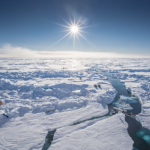Lesson Plans & Activities
Ice Core Demonstration: The Past is the Key to the Future
Project EXTREMES lessons were written to be stand alone lessons but can be incorporated into a larger unit.
This lesson has students explore how the gases trapped in ice cores over the last quarter of a century can be used to understand how Earth's atmosphere has changed in the past.

Exploring the Arctic
This is the first activity of a three-part curriculum about Arctic climate; the activities may be used independently or in sequence.
This activity introduces students to the Arctic and Arctic climate. Through a virtual exploration of the geography of the Arctic students become familiar with the region. They are then introduced to meteorological parameters that Arctic research teams use.Do you really want to visit the Arctic?
This is the second activity of a three-part curriculum about Arctic climate; the activities may be used independently or in sequence.
This jigsaw activity introduces students with Arctic weather data using a role-playing activity that has students read and interpret graphs while considering the optimal time to plan a research mission to the Arctic.Exploring Arctic Climate Data
This is the third activity of a three-part curriculum about Arctic climate; the activities may be used independently or in sequence.
In this final activity, students use authentic Arctic climate data to explore albedo and its relationship to seasonal snowmelt as a self-reinforcing feedback mechanism, which is then applied to large scale global climate change.Exploring the New and Old Arctic
This unit consists of 6 lessons, each tied to NGSS nature of science understandings
In this MS/HS unit, students compare and contrast Arctic expeditions of the past (1893-1896 Fram expedition) and the present (2019-2020 MOSAiC expedition) to prepare for the Arctic of the future.Arctic Feedbacks: Not All Warming Is Equal
This storyline unit consists of 10 lessons, each tied to NGSS Earth's systems standards
In this MS/HS unit, students engage with 360° virtual field trips, authentic Arctic datasets, and app-based labs to construct models and explanations for the unit driving question, "Why might the Arctic be warming four times as fast as the rest of the world?"What do we already know, or think we know, about climate & Antarctica?
This is the first lesson of a five-part curriculum about Antarctic physical environments and ecosystems.
In this lesson, students will elicit initial ideas about climate, explore images of Antarctica, learn important vocabulary, and synthesize how satellite imagery can help us understand climate change in Antarctica.How does the changing climate impact the penguins around Antarctica?
This is the second lesson of a five-part curriculum about Antarctic physical environments and ecosystems.
In this lesson, students investigate the life history characteristics of different Antarctic penguin species and identify the changes that their populations have experienced.Antarctic Life & Albedo
This is the third lesson of a five-part curriculum about Antarctic physical environments and ecosystems.
In this lesson, students explore the importance of albedo (or reflectivity) to penguins and the surfaces they inhabit and learn how penguin colonies may be mapped using satellites.
Why does the ice melt on the “Frozen Continent”?
This is the fourth lesson of a five-part curriculum about Antarctic physical environments and ecosystems.
After exploring albedo in the previous lesson, this lesson expands on more factors that lead to surface ice melt in Antarctica.Human Impacts on Climate Change: What will happen and what can we do about it?
This is the fifth lesson of a five-part curriculum about Antarctic physical environments and ecosystems.
In this lesson, students explore how human activities will continue to impact Antarctic ice, discuss human contributions to climate change, and investigate what we can do to stop/reverse these negative effects.
A Changing Arctic Ecosystem
This storyline unit consists of 8 lessons, each tied to NGSS life science standards
The Arctic is warming more rapidly than anywhere else on Earth. One consequence of a warming Arctic is a dramatic decline in sea ice, an important habitat for many Arctic plants and animals. In this unit students will engage with 360° virtual reality tours, hands-on labs, and authentic Arctic datasets as they gather evidence to construct explanatory models for the unit driving question, "How might the decline in sea ice affect Arctic organisms large and small?"Data Puzzle: On a Budget
This data puzzle is a stand-alone lesson that is part of a larger collection of data puzzles.
The Arctic is currently warming at a rate faster than the global average, a phenomenon known as Arctic amplification. In this Data Puzzle, students analyze authentic Arctic datasets to construct explanatory models for the following question, "Why might the Arctic be warming faster than other places on Earth?"
Data Puzzle: Balancing Act
This data puzzle is a stand-alone lesson that is part of a larger collection of data puzzles.
Since the early 2000s, the Greenland Ice Sheet’s mass balance has been consistently negative, meaning more mass is being lost than gained. But this change in mass balance hasn’t always happened at the same rate. What could account for observed changes to the amount of ice in the Greenland Ice Sheet in recent decades?
Data Puzzle: To Reflect or Not to Reflect
This data puzzle is a stand-alone lesson that is part of a larger collection of data puzzles.
The color of Earth's surface determines how much of the Sun's energy is reflected or absorbed, where lighter-colored surfaces are more reflective (higher albedo). In this Data Puzzle, students analyze authentic Arctic data to construct explanatory models for the following question, "How might the Arctic’s albedo be affected by the observed decline in sea ice?"
Data Puzzle: It's All Connected
This data puzzle is a stand-alone lesson that is part of a larger collection of data puzzles.
What makes the Arctic climate system so unique is the sea ice, which influences the Arctic climate in many ways. In this Data Puzzle, students analyze authentic Arctic data to construct explanatory models for the following question, "What effect, if any, do leads (cracks in the sea ice) have on the transfer of moisture between the Arctic Ocean and atmosphere?"
VR Expedition: Explore the Arctic Aboard The Fram
This is part of a collection of VR experiences.
Take a virtual stroll through the Fram and learn all about Nansen and his crew's adventures in the Arctic with this virtual expedition. This is a stand-alone resource that is part of a MOSAiC VR collection.Data Puzzle: What's the Limit?
This data puzzle is a stand-alone lesson that is part of a larger collection of data puzzles.
Moss campion is a hearty flowering plant that thrives in harsh arctic and alpine tundra ecosystems over a wide range of latitudes in North America. In this Data Puzzle, students analyze authentic moss campion growth and survival data to construct explanatory models for the following question, "How is the growth and survival of moss campion affected by latitude?"
VR Expedition: MOSAiC Ice Camp
Take a virtual tour of the MOSAiC Ice Camp in this virtual experience. This is a stand-alone resource that is part of a MOSAiC VR collection.VR Expedition: MOSAiC Distributed Network
Take a virtual tour of the MOSAiC Distributed Network, Fedorov, in this virtual experience. This is a stand-alone resource that is part of a MOSAiC VR collectionData Puzzle: Tracing Carbon Through the Arctic Food Web
This data puzzle is a stand-alone lesson that is part of a larger collection of data puzzles.
The Arctic is home to a huge variety of living things (humans included) that have adapted to harsh conditions. However, these conditions are changing as Arctic temperatures rise and sea ice declines. In this Data Puzzle, students trace the flow of carbon through the Arctic food web to construct explanatory models for the following question, "How might the decline in sea ice affect Arctic organisms large and small?"

PolarPASS Interactive Environments
Using real data, diverse material types, and a range of activities, PolarPASS modules are designed to bring polar science and exploration to the classroom. PolarPASS modules link to Climate Literacy Principles and Polar Literacy Principles and are being tested in teaching models that include semester, quarter, and block teaching models.
Polar Space and Places, or PolarPASS, is connecting polar-focused material with innovative teaching methods to advance STEM undergraduate education and increase polar knowledge.
Drifting North Polar Planetarium
In this MS/HS lesson, students will be transported to the Arctic with the MOSAiC expedition, The Multidisciplinary drifting Observatory for the Arctic Climate, in an immersive classroom and field trip experience.Module 1: Exploring the Glacier Basin System
This Module consists of five Units, walking students through an overview of the glacier basin system, exploring glacier mass balance, albedo, and surface melt, and looking inside and underneath the glacier. The Units also cover the transition from the glacier margin to land and system responses to climate change.
Earth's polar environments have undergone rapid change during the 21st century and scientists have generated important new data and made groundbreaking insights. Despite growing interest to bring polar-focused material into the undergraduate classroom, curriculum development has lagged. Polar Space and Places, or PolarPASS, is connecting polar-focused material with innovative teaching methods to advance STEM undergraduate education and increase polar knowledge.
Module 2: Long-term Spatial Transformations of the Glacier Basin System
Module 2 is designed to follow after Module 1. Instructors may choose to use Module 2 independently, but may want to consider some additional introductory materials if they are not beginning with Module 1. Module 2 consists of four Units. The Units begin by exploring past ice margin retreat and processes of ice margin retreat and elevation change. The material then explores natural climate variability and anthropogenic forcings, and then examines potential future ice margin response to climate change.
Earth's polar environments have undergone rapid change during the 21st century and scientists have generated important new data and made groundbreaking insights. Despite growing interest to bring polar-focused material into the undergraduate classroom, curriculum development has lagged. Polar Space and Places, or PolarPASS, is connecting polar-focused material with innovative teaching methods to advance STEM undergraduate education and increase polar knowledge.
Introduction to the MOSAiC Expedition
Introduction to the MOSAiC Expedition is one of four activities in the The Drifting North Polar Planetarium Experience that invites students to explore what it was like to participate in the MOSAiC expedition to the North Pole.
In this activity, students will learn about the conditions in the Arctic and the scientists who study them through slides, audio podcast, and a worksheet. Learning will be guided with the driving questions: What is the Arctic? Who studies the Arctic? and Why should we care about the Arctic?Letters to the Arctic
Letters to the Arctic is one of four activities in the The Drifting North Polar Planetarium Experience that invites students to explore what it was like to participate in the MOSAiC expedition to the North Pole.
In this activity, students put themselves in the shoes of a scientist who works in a fragile and changing environment. Learning will be guided with the driving question: How do scientists feel about the places they study?Seasons and Light in the Arctic
Seasons and Light in the Arctic is one of four activities in the The Drifting North Polar Planetarium Experience that invites students to explore what it was like to participate in the MOSAiC expedition to the North Pole.
In this activity, student's will explore why we have seasons and changing daylight throughout the year by graphing different daylight hours around the world. Learning will be guided with the driving question: How do we understand the Arctic light and seasons?Sea Ice, The Character
Sea Ice, The Character is one of four activities in the The Drifting North Polar Planetarium Experience that invites students to explore what it was like to participate in the MOSAiC expedition to the North Pole.
In this activity, student's will compare and contrast the different structures of freshwater ice and seawater ice with a hands-on lab. Learning about what makes sea ice so unique in the Arctic will be guided by the driving questions: How does saltwater sea ice differ from freshwater ice? What is sea ice like in the Arctic? and Why is sea ice important in the Arctic?
